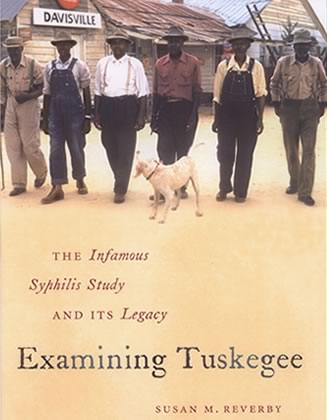 ... continued from Remembering Tuskegee.
... continued from Remembering Tuskegee.Twenty-seven years later, on May 16, 1997, President Clinton formally apologized for the Tuskegee Experiment, stating,
“The United States government did something that was wrong -- deeply, profoundly, morally wrong. It was an outrage to our commitment to integrity and equality for all our citizens.Thankfully, the scientific community has learned from the lessons of this event. Tuskegee University (formerly known as Tuskegee College) founded the National Center for Bioethics in Research and Health Care, ensuring the ethical and equal treatment of minorities in clinical and public health studies.
To the survivors, to the wives and family members, the children and the grandchildren, I say what you know: No power on Earth can give you back the lives lost, the pain suffered, the years of internal torment and anguish. What was done cannot be undone. But we can end the silence. We can stop turning our heads away. We can look at you in the eye and finally say on behalf of the American people, what the United States government did was shameful, and I am sorry.”
"The entire history of health care in the United States has been shamefully blighted by a long series of racial inequalities," said Dr. Marian Gray Secundy, the first Director of the Center. "As a result, a legacy of distrust has been handed down from one generation to the next. But this Bioethics Center bears great hope. It takes us to the critical next step in changing the course of history for people of color."
Looking backward, it is very easy to see where the research and public health community went wrong with what occurred in Tuskegee. Even though this may seem like such a long time ago, this study directly impacted our parent’s and grandparent’s generation. Research and health care communities have much progress in bioethics, informed consent and cultural competency.
To continue these successes, it is important to put these lessons into action. Here are ways that we can actively recruit and build relationships with minority populations to continue with clinical research.
- Try to think outside the box for ways to recruit minority patients. A group in Atlanta found that by working with barbershop owners, they were able to encourage more Black men to get prostate cancer screenings.
- Build relationships with community leaders. Pastors, small business owners, local officials and other community workers are strongly linked to their community. They are often able to talk to others on a level that they will understand and have already built a sense of trust with the people that they serve.
- Seek patients in the places that they already receive care. Federally qualified health centers (also known as community health centers) are located in areas of high medical need; both urban and rural. They service a high number of minority patients, as well as a large amount of uninsured patients. Building relationships with the health care providers, management and patients can also bridge the gap into increased participation.
Post contributed by: Kimberly Brown

No comments:
Post a Comment